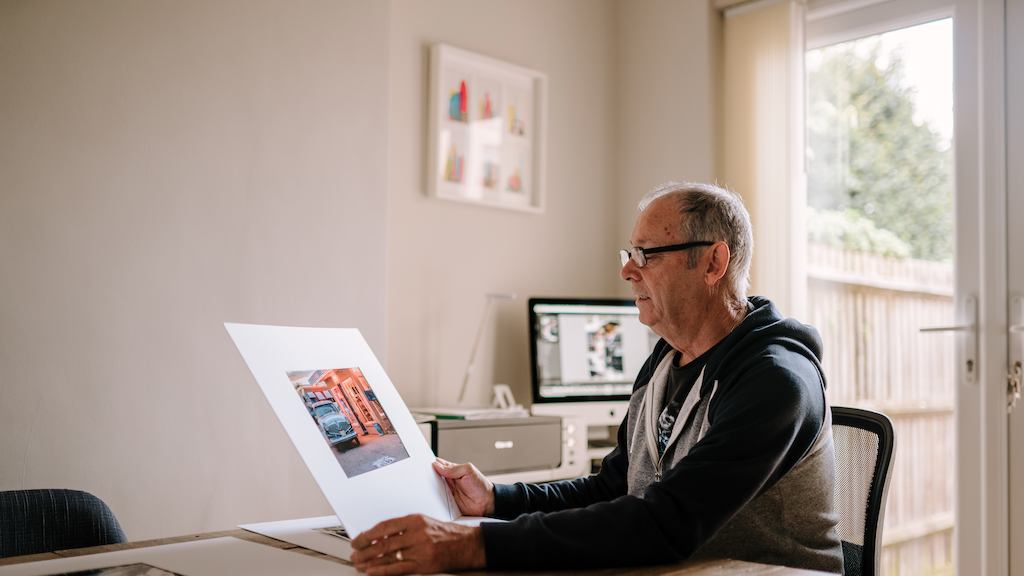Next Steps: Building on solutions for the housing crisis affecting older People

In a previous Ageing Better blog, housing sector expert David Done detailed the wide-ranging implications of poor-quality housing on an ageing population.
Here, in the second of his blogs, he outlines what needs to be done, with reference to practical and sustainable solutions.

In my previous blog, I explored the critical issue of poor-quality housing for older people and the significant impact it has on health, well-being, and the economy.
Through my ongoing work with the Centre for Ageing Better, and my previous role as a chair of an award-winning housing association, I’ve learnt that addressing the housing crisis requires a comprehensive and unified approach.
This follow-up explores practical steps and initiatives that we could take to improve housing for older people, transforming lives and communities.
1. Expanding Financial Support and Incentives
One of the biggest barriers for older homeowners in maintaining their properties is financial constraint. To address this, governments and local authorities should increase funding for home improvement grants and offer low-interest loans to assist with necessary repairs and upgrades.
Introducing tax breaks for renovations that improve safety, accessibility, and energy efficiency can further help older people.
Additionally, banks and financial institutions should be encouraged to develop favourable equity release schemes and other products tailored to older homeowners.
The UK’s Disabled Facilities Grant (DFG) offers financial assistance to older adults and disabled individuals for home adaptations that improve accessibility, such as installing stairlifts or walk-in showers.
This grant helps older homeowners make critical adjustments without the financial strain, enabling them to live independently for longer.
2. Integrated Health and Housing Services
In my previous blog I explained the connection between housing and healthcare, and how a collaborative approach could significantly enhance outcomes for older people.
In response health services, local councils, and housing providers should foster partnerships to identify and address housing-related health issues.
This is important because integrated services that offer health assessments and home adaptation recommendations can ensure homes are suited to the physical needs of their occupants.
Implementing preventive health programs focused on better housing conditions can also reduce the overall strain on health services.
3. Promoting Community-Based Solutions
We know that isolation is a major issue for older adults living in poor-quality housing, but also that community-driven initiatives can make a substantial difference.
From my experience of working in social housing sector, I’ve seen how supporting community-led housing projects can provide affordable, high-quality housing solutions tailored to older people.
This coupled with establishing local support networks and volunteer programmes can assist older adults with home maintenance, transportation, and social activities. Additionally, promoting intergenerational housing models can foster interaction between older and younger generations, providing mutual support and reducing isolation.
The Older Women’s Co-Housing (OWCH) community in High Barnet for example is a pioneering housing scheme designed and led by a group of women aged 50 and above.
Residents are both owners and renters and share common spaces and responsibilities while maintaining their independence in their private units. The women actively participate in the management and decision-making processes of the community.
This approach not only combats loneliness but also provides a sense of security and belonging, making it a groundbreaking model for aging in place.
4. Enhancing Awareness and Education
Education and awareness are critical in empowering older adults and their families to seek and advocate for better housing. Public awareness campaigns should be launched to highlight the importance of quality housing for older adults and the available support services.
Providing training for professionals in the housing and care sectors on the specific needs of older adults and best practices for meeting these needs is essential. Creating centralised information hubs where older adults and their families can access resources, advice, and support services related to housing and health is also important.
5. Establishing local Good Home Hubs
Good Home Hubs, as advocated by the Centre for Ageing Better, could play a vital role in transforming housing for older adults. Local hubs could serve as centralised access points where older people can obtain information, support, and services related to housing improvements, adaptations, and maintenance.
By coordinating between various service providers, these hubs could ensure comprehensive and integrated support tailored to specific needs.
Fostering community involvement through these hubs can promote volunteer programs and local initiatives, enhancing the quality of life for older residents. Additionally, they can help allocate resources more effectively by identifying urgent needs and directing funds and services accordingly.
6. Improving rented housing in the social and private sectors for older people
In my previous blog, I highlighted the specific problem of older people living in poor quality rented housing. To tackle this, we need a comprehensive strategy involving policy reform, landlord incentives, and tenant support.
The new government should implement and enforce stricter housing quality standards and inspection regimes to ensure rental properties meet basic safety and habitability standards.
Financial incentives, such as tax breaks or grants, can encourage landlords to upgrade and maintain their properties to a higher level. Additionally, providing legal aid and advocacy services can empower older tenants to assert their rights and seek remedies for substandard living conditions.
Expanding affordable housing programmes and increasing funding for rent subsidies can also alleviate financial pressures, allowing older people to access better quality housing. Ultimately, a collaborative effort between policymakers, landlords, and community organisations is needed to create a safer and more dignified living environment for older renters.
7. Leveraging technology and innovation
I am passionate about using technology to significantly improve the living conditions of older people. Encouraging the adoption of smart home technologies, such as fall detection systems, automated lighting, and remote health monitoring, can enhance safety. Investing in energy efficiency innovations can reduce costs and improve comfort for older residents.
Implementing digital inclusion programs is also crucial to ensure older adults can access online services, social connections, and information.
Conclusion
Improving housing for older people is vital and requires a multifaceted approach with a concerted effort across various sectors. By taking the steps I’ve outlined in this blog, we can create a future where all older adults live in safe, comfortable, and dignified environments.
Addressing these issues holistically will not only improve the quality of life for millions of older people but will also deliver significant economic, social, and environmental benefits.
It’s a commitment to creating a more inclusive, equitable society where everyone, regardless of age, has a place to call home.
David Done is a specialist advisor for the Centre for Ageing Better. Founder and former CEO of RHP, an award-winning housing association working in West London, he now works at board level as a non-executive director and advisor in the housing sector and for commercial companies.
Safe Homes Now
Find out more